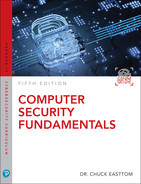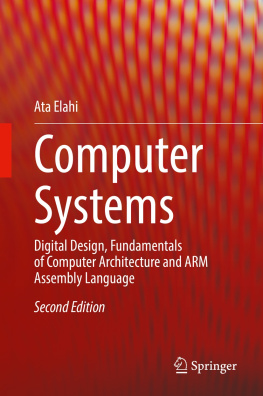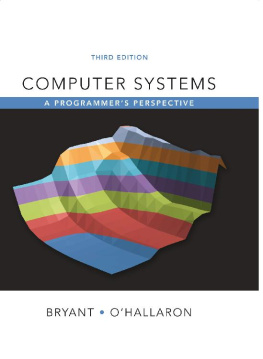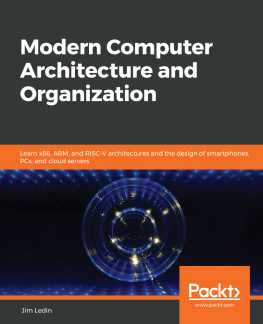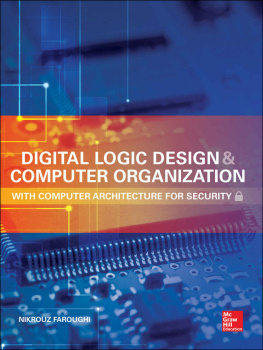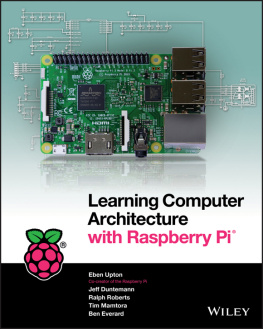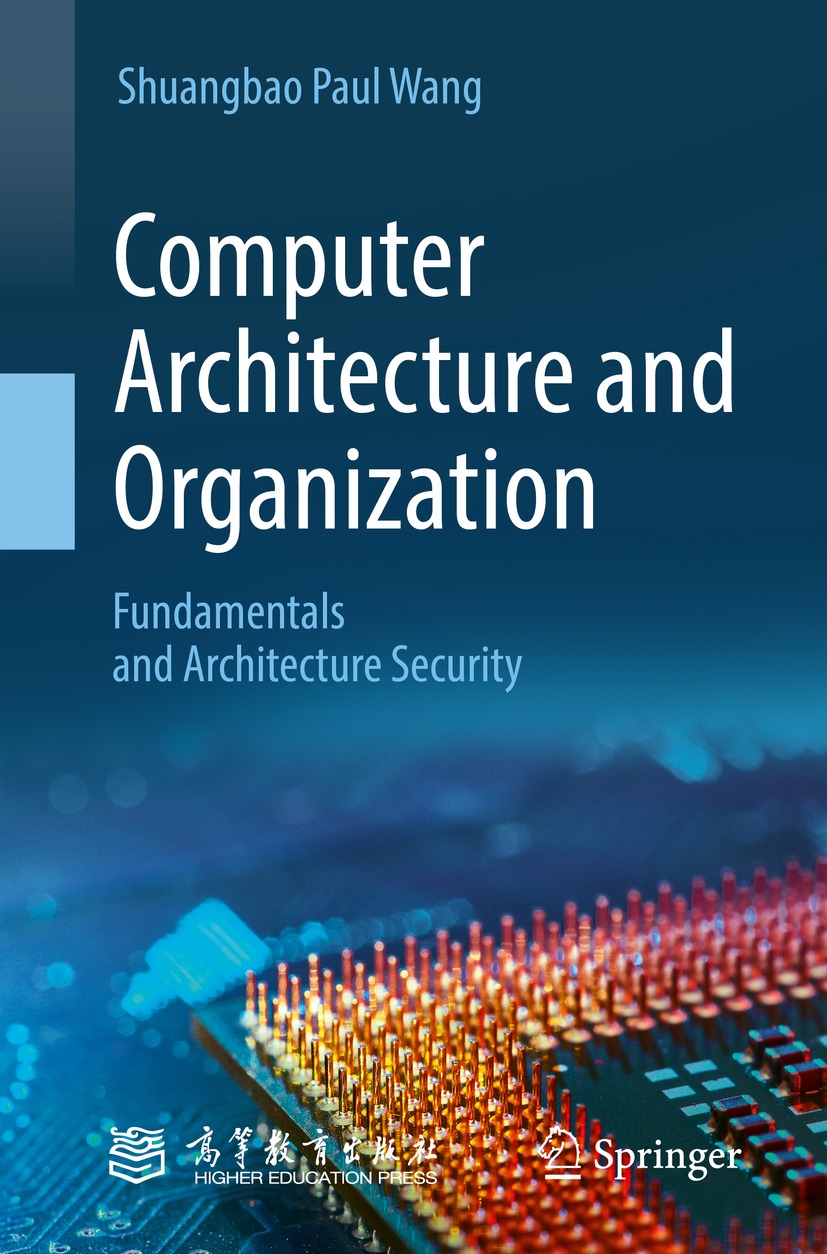Shuangbao Paul Wang
Computer Architecture and Organization
Fundamentals and Architecture Security

Logo of the publisher
Shuangbao Paul Wang
Department of Computer Science, Morgan State University, Baltimore, MD, USA
ISBN 978-981-16-5661-3 e-ISBN 978-981-16-5662-0
https://doi.org/10.1007/978-981-16-5662-0
Jointly published with Higher Education Press
The print edition is not for sale in China (Mainland). Customers from China (Mainland) please order the print book from: Higher Education Press
Higher Education Press 2021
co-publish with Higher Education Express.
This work is subject to copyright. All rights are solely and exclusively licensed by the Publisher, whether the whole or part of the material is concerned, specifically the rights of reprinting, reuse of illustrations, recitation, broadcasting, reproduction on microfilms or in any other physical way, and transmission or information storage and retrieval, electronic adaptation, computer software, or by similar or dissimilar methodology now known or hereafter developed.
The use of general descriptive names, registered names, trademarks, service marks, etc. in this publication does not imply, even in the absence of a specific statement, that such names are exempt from the relevant protective laws and regulations and therefore free for general use.
The publishers, the authors, and the editors are safe to assume that the advice and information in this book are believed to be true and accurate at the date of publication. Neither the publishers nor the authors or the editors give a warranty, express or implied, with respect to the material contained herein or for any errors or omissions that may have been made. The publishers remain neutral with regard to jurisdictional claims in published maps and institutional affiliations.
This Springer imprint is published by the registered company Springer Nature Singapore Pte Ltd.
The registered company address is: 152 Beach Road, #21-01/04 Gateway East, Singapore 189721, Singapore
To my father who educated thousands of students, including his sons. To my 93-year-old mother who cares me throughout my journey. To my wife, Ruming, and daughters, Jennifer and Jane, for their love and endless support.
Preface
This book introduces a new realm of computing architecture that incorporates computer architecture, computer organization, and the science of security into trusted computer and chip design.
The book covers a spectrum of topics in cache and nonvolatile memory, instructional set architecture (ISA), reduced instruction set computer (RISC-V), hyper-threading, virtualization, trusted computing modules (TPMs), field-programmable gate arrays (FPGAs), graph and queue theories, cryptographic hardware, and instruction-level parallelism. In addition, the book also discusses quantum computing architecture, quantum random number generator (QRNG), quantum key distribution (QKD), and post-quantum cryptography (PQC).
The book is essential for computer science, computer engineering, and cybersecurity professionals to thrive in todays digital age and survive in the workplace. It features an innovative design approach with practical skills to modern computer architecture and organization from authors cutting-edge research in architecture security and quantum leap.
Traditionally, computers and microcomputing chips were designed mainly for speed and performance. Security has been a weak point for most CPUs and computers on the market. As a result, attackers are able to use sophisticated techniques to penetrate into cache memory in modern CPUs, therefore, to break the isolation principle of virtualization, which causes vulnerabilities in cloud computing systems. This book integrates security in every aspect of computer architecture and system design, aiming to design and develop next-generation computers that have less vulnerabilities and are immune from attacks. In this book, the author illustrates theoretical concepts with easy-to-understand examples to explain the perception and practical implementations.
This book is intended for undergraduate and graduate students, engineers, cybersecurity professionals, and researchers who are interested in design and develop trusted computer architecture and systems. The book can also be used as a gateway for career-changing individuals who want to enter computer and cybersecurity field but their educational background was not in computer science and information technology related fields.
The book comes with a website that provides slides, further readings, and updates for students and lecture notes for instructors. Computer Architecture and Organization provides readers with not only the sections that the traditional textbooks contain but also the latest development of computing architecture, security, and quantum computing technologies.
Acknowledgments
The author would like to acknowledge Dr. Robert S. Ledley, who was the inventor of body CT scanner, a doctoral adviser, mentor, and supervisor for his vision in computing and being a coauthor of the first Computer Architecture and Security book published in 2013.
The author would like to thank IBM for the initial training at the Yorktown research center and providing the quantum computing resources. MITs quantum computing certificate program provides cutting-edge theoretical and practical knowledge, especially the lectures taught by the renowned Professor Dr. Peter Shor.
The author would also like to extend gratitude to Ms. Ying Feng for her incredible help in preparing this manuscript.
Contents
About the Author
Shuangbao Paul Wang
is a Professor and Chair of Computer Science at the Morgan State University. He is a LINK Fellow in Advanced Simulation and Training. Paul has held positions as TSYS Endowed Chair in Cybersecurity by a $5 million endorsement, Director of Center for Security Studies with more than 3000 cyber students, and Chief Information and Technology Officer (CIO/CTO) of the National Biomedical Research Foundation (NBRF). He has been a consultant to many companies and serving on multiple boards and government and private sector technology committees. Paul was directly involved in drafting of the National Initiatives of Cybersecurity Education (NICE) framework. His research areas are secure architecture, quantum algorithms, AI/ML IoT/CPS, cryptology, and video indexing.
In addition to books, referred publications, conference speakers, and numerous grant activities, including recent grants from the NSF, NSA, Apple, and Microsoft, Paul has four patents; three of them had been licensed to the industry. In teaching, one of his students appeared in Time magazine for doing his class project, which he commercialized. One of his published papers ranked the first place in ScienceDirects TOP25 Hottest Articles. His research was awarded the Best Invention Award in Entrepreneurship Week USA. Paul was feathered in ACM and a number of news outlets.
Paul received his Ph.D. under Dr. Robert S. Ledley, the inventor of body CT scanner, a member of the National Academy of Sciences, a recipient of the National Medal of Technology, and an inductee of the National Inventors Hall of Fame. Paul received his post-doc certificates in Quantum Computing from the MIT following a renowned scholar Dr. Peter Shor and in Data Science from the University of Cambridge.



